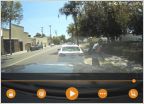-
Welcome to Tacoma World!
You are currently viewing as a guest! To get full-access, you need to register for a FREE account.
As a registered member, you’ll be able to:- Participate in all Tacoma discussion topics
- Communicate privately with other Tacoma owners from around the world
- Post your own photos in our Members Gallery
- Access all special features of the site
California Desert Protection Act of 2010
Discussion in 'Off-Topic Discussion' started by Crom, Dec 31, 2009.


 What's your favorite wallet?
What's your favorite wallet? Restocking my house opinions needed on best knives, pots and pans?
Restocking my house opinions needed on best knives, pots and pans? Spiders HATE peppermint
Spiders HATE peppermint No I am not your uber driver. GTFO of my truck
No I am not your uber driver. GTFO of my truck Screen shot the bottom of your TW page to see what "the man" is trying to sell you...
Screen shot the bottom of your TW page to see what "the man" is trying to sell you... Bed Sheets
Bed Sheets










































































